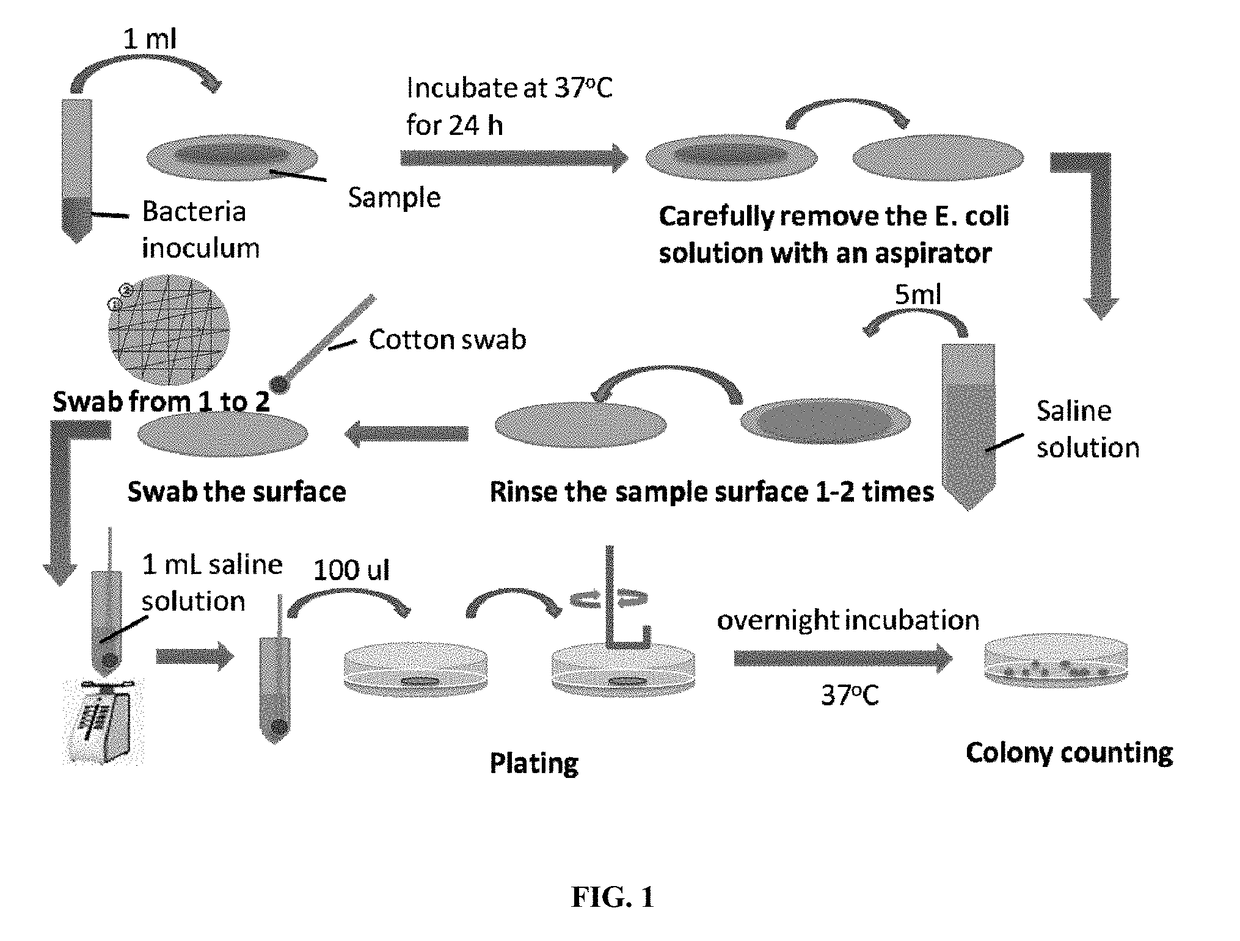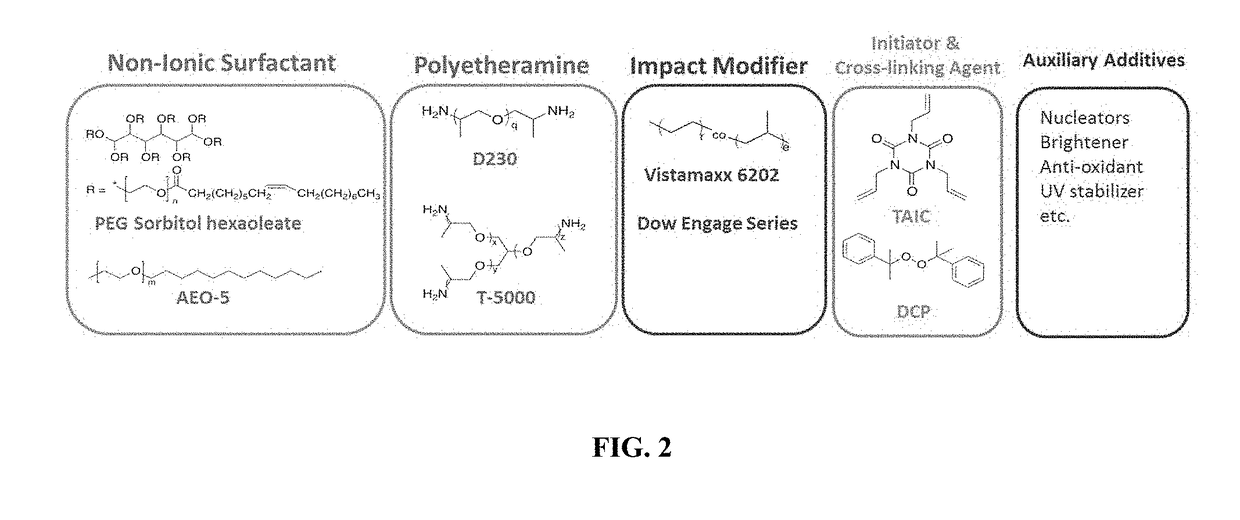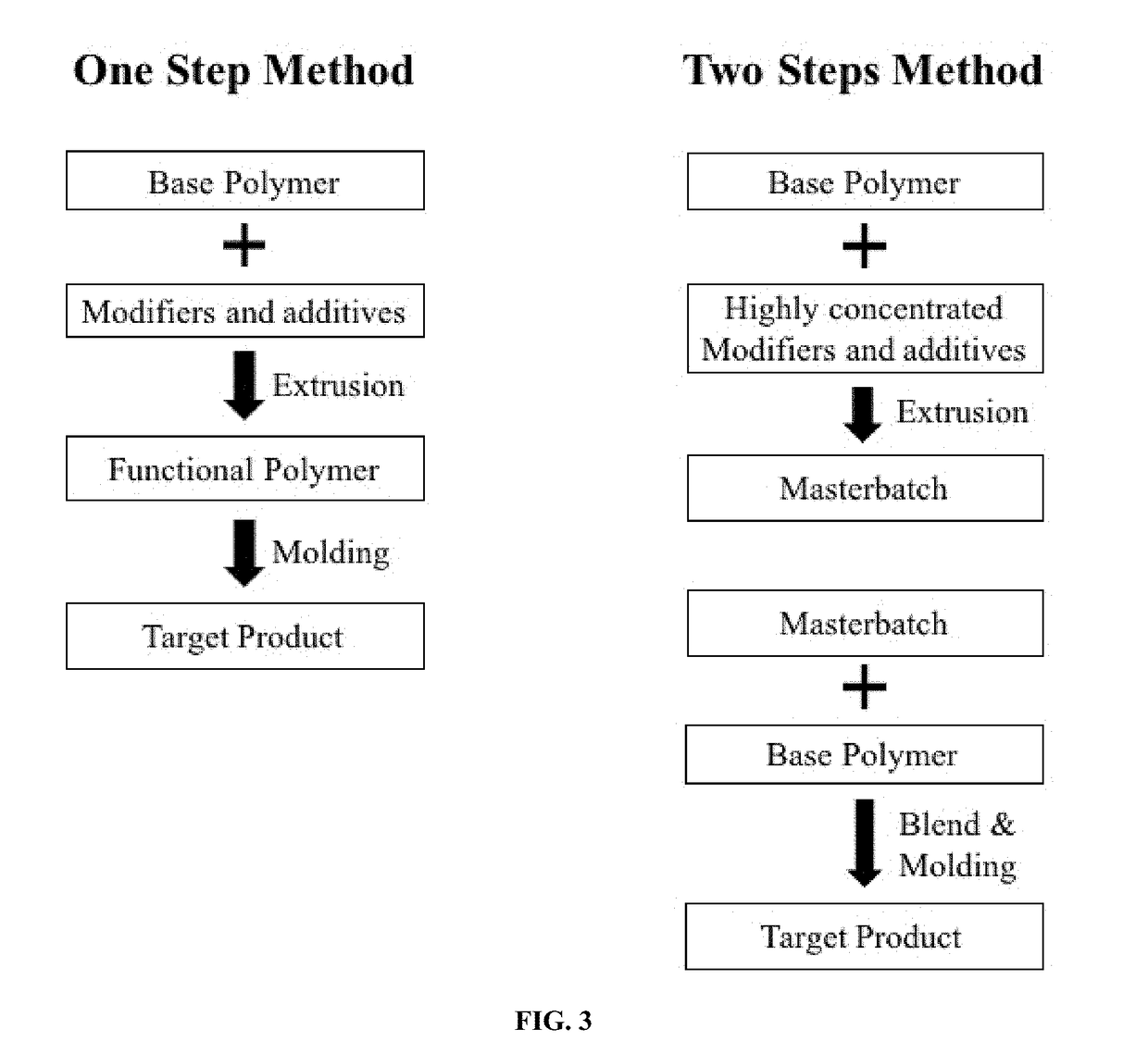Mechanically reinforced, transparent, Anti-biofouling thermoplastic resin composition and manufacturing method thereof
a thermoplastic resin and composition technology, applied in the direction of coatings, etc., can solve the problem of no relevant claims
- Summary
- Abstract
- Description
- Claims
- Application Information
AI Technical Summary
Benefits of technology
Problems solved by technology
Method used
Image
Examples
example 1
[0043]The modification of MBS, a highly transparent methyl methacrylate butadiene styrene plastic compound, was rendered by extrusive compounding of 94% MBS resin with 1% IRGANOX® B 225 and 5% AEO-5, a fatty alcohol ethoxylate, on a weight basis with a processing temperature ranging from 180° C. to 210° C. to obtain functional resin directly. The modified formulation was re-pelletized as standalone resin (herein annotated as MBS-M) that could be fed into an injection molding machine (with processing temperature of 210° C.) to obtain plastic samples dictated by the mold tooling design. FIG. 4A shows that the molded plate samples made of MBS-M according to the present method remain essentially transparent. The characterization results are summarized in Table 1. The impact strength of MBS-M was almost double that of the base MBS plastic apart from the added microbial repellent performance towards E. coli, a Gram-negative and S. aureus, a Gram-positive bacteria. MBS-M passed ISO 22196's...
example 2
[0044]The modification of PPR, a transparent polypropylene random copolymer, was rendered by extrusive compounding of PPR resin with 30% polyolefin elastomer (VISTAMAXX™ 6202, ExxonMobil), 2% JEFFAMINE® D-230, 2% poly(ethylene glycol) sorbitol hexaoleate, 3.75% alumina nanoparticles, 0.1% dicumyl peroxide, 0.05% triallyl isocyanurate and 0.01% CBS-127, an optical brightener, on a weight basis with processing temperature ranging from 170° C. to 190° C. to obtain a functional masterbatch concentrate (herein, annotated as PPR-M) after pelletization. The masterbatch was dry blended at a ratio of 1:1.5 w:w PPR with 0.1% overall by weight of NX8000 and subsequently fed into an injection molding machine (with processing temperature of 190° C.) to obtain plastic samples. The characterization results are summarized in Table 2. Alumina nanoparticles helped to minimize the reduction of heat deflection temperature (HDT) by counteracting the influence of addition of polyolefin elastomer.
TABLE 2I...
example 3
[0045]The modification of PPM, an impact-modified polypropylene compound, was rendered by extrusive compounding of PPM resin with 2% JEFFAMINE® D-230, 2% AEO-5, 1% MILLAD® NX8000, 0.1% dicumyl peroxide and 0.05% triallyl isocyanurate with processing temperature ranging from 170° C. to 190° C. to obtain a functional masterbatch concentrate (herein, annotated as PPM-M) after pelletization. The masterbatch was dry blended at a ratio of 1:1.5 w:w PPM with 0.1% overall by weight of IRGANOX® 1010 and 0.1% overall by weight of IRGAFOS® 168 for injection molding with processing temperature of 190° C. FIG. 5A shows that the molded plate sample of PPM-M is essentially transparent; The characterization results are summarized in Table 3, and also in FIG. 5B and FIG. 5C. FIG. 5B shows that when BSA protein solution added on the molded plate sample made of PPM-M effectively repelled protein adsorption onto the surface. Solution of bovine serum albumin (BSA), a protein molecule, was dropped on the...
PUM
| Property | Measurement | Unit |
|---|---|---|
| temperature | aaaaa | aaaaa |
| temperature | aaaaa | aaaaa |
| thickness | aaaaa | aaaaa |
Abstract
Description
Claims
Application Information
 Login to View More
Login to View More - R&D
- Intellectual Property
- Life Sciences
- Materials
- Tech Scout
- Unparalleled Data Quality
- Higher Quality Content
- 60% Fewer Hallucinations
Browse by: Latest US Patents, China's latest patents, Technical Efficacy Thesaurus, Application Domain, Technology Topic, Popular Technical Reports.
© 2025 PatSnap. All rights reserved.Legal|Privacy policy|Modern Slavery Act Transparency Statement|Sitemap|About US| Contact US: help@patsnap.com



